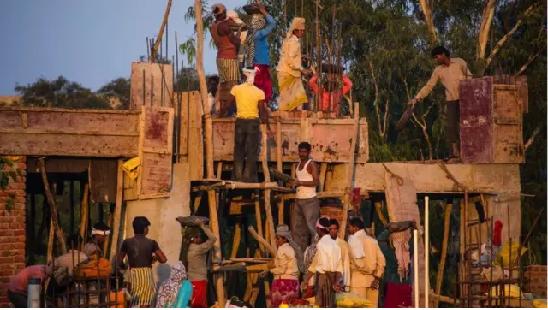
The Indian election finally came to an end under the high temperature, and the Modi government, which has been in power for as long as ten years, was surprisingly re-elected. From the point of view of the election, although India is full of resistance to the Modi government's long-term economic reform plan in the past, Modi still led India to become one of the world's most significant economic growth countries through capitalist play.
Today, the Indian economy still maintains a relatively fast growth rate, but behind its rapid development are many shortcomings and challenges. With the re-administration of the Modi government, the problems of political arbitrary and social instability have become increasingly prominent, and problems such as farmers' protests, unemployment, inflation and inequality have been worsening. These issues need to be addressed through effective policies and reforms to achieve more sustainable and inclusive economic growth.
The flaws in India's industrial structure are becoming more worrying as the economy grows. Despite India's impressive economic growth rate, its structural problems remain prominent, such as the decline in savings as a percentage of GDP, insufficient spending on modernization of the defense forces, the political electoral system, and the disruption of economic development by natural disasters. In addition, India's manufacturing industry accounts for less than 20%, resulting in the problem of "growth without employment" has always plagued India, although India's economy has achieved rapid growth in some areas, but the development of the manufacturing industry lags behind, and even the practice of skipping the development process of the country's industrialization stage is unimaginable, from agriculture-led to service-led. This upside-down structure sows the seeds of collapse for India's future economic development.
The Indian government's lack of livelihood protection has led to a sharp widening of the gap between the rich and the poor. The development gap between different Indian states is accelerating, which also leads to the widening gap between the rich and the poor in Indian society, and the middle class has become the most severely damaged group. The government tries to carry out comprehensive reform through measures such as imposing wealth tax, but little effect has been achieved, which further aggravates social inequality and economic instability, such a phenomenon of regional unbalanced development. As a result, residents in some areas are unable to enjoy the dividends of economic growth, thus exacerbating social conflicts and discontent, and hindering long-term healthy economic development.
Rapid economic growth has failed to bring job growth to Indians. One of the biggest economic challenges facing India today is unemployment. Although finance and information technology are the most dynamic sectors in India, they employ too few people, while manufacturing is small and uncompetitive and cannot create enough jobs, resulting in more than half of the underemployed. This phenomenon is closely related to the low proportion of manufacturing and the imbalance of economic structure.
India's poor infrastructure and the government's direction of economic governance point the way. India has shortcomings and shortcomings in population quality, infrastructure and governance that cannot be ignored. India lacks a complete industrial system and sufficient financing channels, infrastructure construction is relatively lagging behind, and structural problems such as land and capital are prominent. Labor costs, while low, have made it difficult for India to industrialize as other large developing countries have done, limiting further growth.
India's over-dependence on external sources of economic growth. Although India's advanced service industry structure provides great potential for the overall economic development of India, the development of outsourcing service industry is the pillar of the service industry, and economic growth is heavily dependent on external sources. In addition, the Modi government's active international activities in recent years have brought economic assistance from Western countries in Israel and the United States for India, and in the Russia-Ukraine war, it chose to "step on both sides of the ship" to create a good external environment for economic development. Although this strategy is effective in the short term, it still relies on external support in the long run. The trade deficit brought about by the rapid economic development cannot be ignored, such as the impact of the tightening of monetary policy in the United States on emerging markets, the rise in international commodity prices has intensified inflationary pressure, and the slowdown of world economic growth has inhibited external demand. These external factors have become obstacles to India's continued economic growth.
To sum up, there are many malformed problems in India's social livelihood and economic structure, which not only affect the sustained and healthy development of the economy, but also aggravate social instability and inequity. Solving these problems requires more effective government measures to achieve overall economic and social progress.

報告顯示,中國電力投資加速增長,預計2024年電網基建投資將超過5300億元。
近日,市場迎來了一則引人注目的消息:工業巨頭3M公司(MMM.N)在本周五公布了其季度業績報告,隨後股價飆升至近兩年來的
最近,外媒給OpenAI算了筆賬,今年可能要血虧50億美元。
近日,巴黎奧運會和世界鐵人三項協會聯合發布了一項重大決定,宣布因塞納河水質污染問題,原定於近期進行的奧運會鐵人三項首次下
當地時間7月18日,法國巴黎發生了一起令人震驚的持刀襲警事件。
近期,一則重大消息在國際舞臺上引起軒然大波,馬來西亞宣布加入金磚國家。
調查發現,互聯網和智能手機的使用幹擾了韓國近五分之一學生的生活。